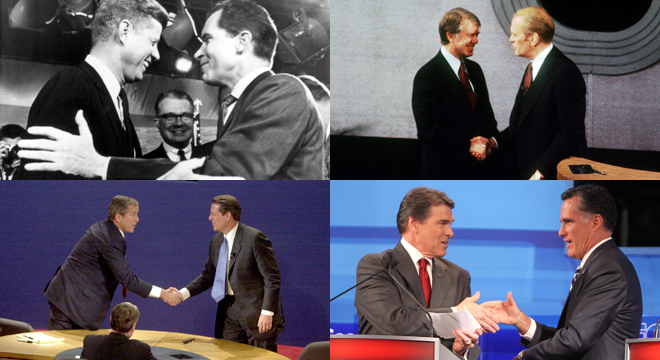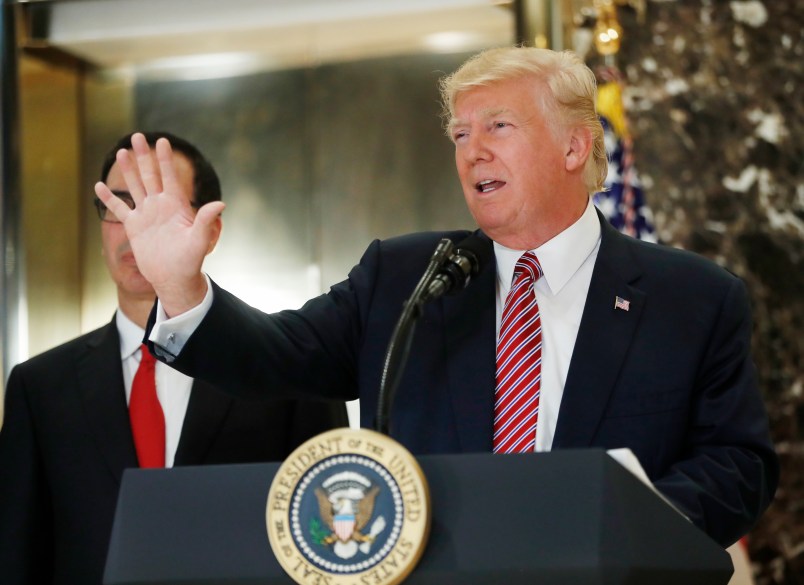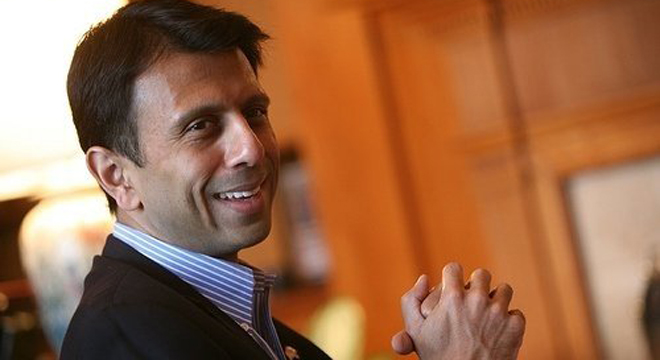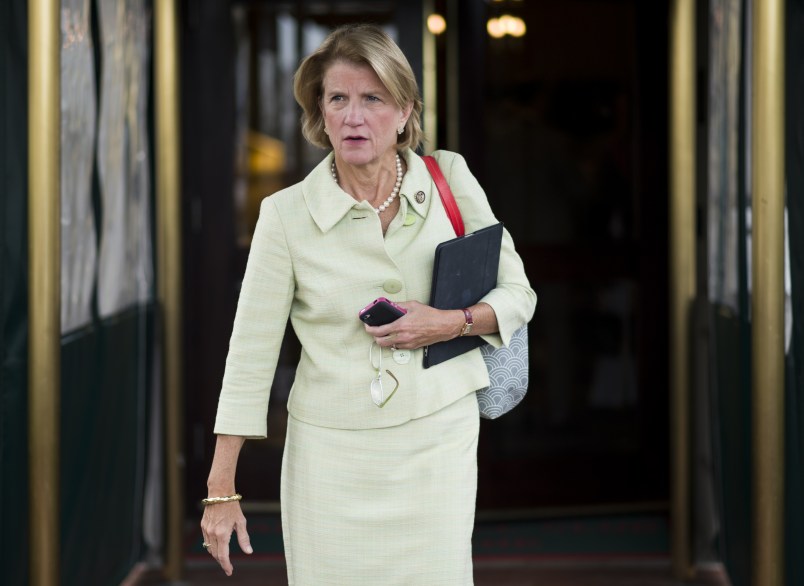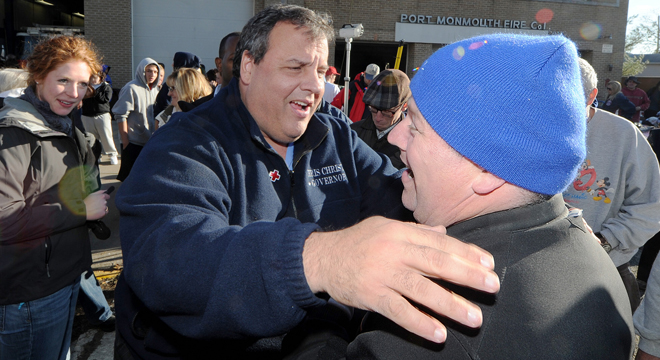So far the Republican primary debates have been by far the biggest catalyst for the candidates’ numerous surges and collapses, from Tim Pawlenty’s campaign-ending “Obamneycare” moment to Rick Perry’s meltdown last month. On Tuesday, the candidates will meet at Dartmouth College for their seventh gathering of the campaign.
But it wasn’t always this way: the explosion of televised primary debates are a relatively recent phenomenon.
Nationally broadcast primary debates date back to1948, when GOP presidential candidates Harold Stassen and Thomas Dewey debated whether the Communist Party should be outlawed in America before a radio audience of millions. In 1956, Democrats Adlai Stevenson and Estes Kefauver debated more broad policy topics ahead of the Florida primary in a televised debate carried by ABC News.
The breakthrough moment for televised presidential debates was John Kennedy and Richard Nixon’s 1960 general election meeting, but it was actually a fitful process before they became the norm. No presidential debates were held for the next three elections. Part of the reason was that frontrunners had plenty of reason to avoid them, especially after Nixon — who was the nominee for two of those elections — had flamed out so spectacularly the first time. But there were also legal issues for the networks, which worried they might violate the FCC’s equal-time rule requiring candidates be given the same opportunity to speak if they requested it if they only gave the top contenders a platform.
There were, however, a few notable primary debates in the interim. Heading into the California primary in 1968, Democrats Eugene McCarthy and Robert F. Kennedy squared off on Vietnam in an ABC-carried debate in San Francisco.
In 1976, televised presidential debates returned with Gerald Ford and Jimmy Carter’s matchup (that would be the one in which Ford said “There is no Soviet domination of Eastern Europe”). Networks devised a new definition of presidential primary and general election debates as a “news event” that did not fall under the scope of the equal-time rule and from then on it became an election cycle ritual.
The next decade saw an explosion in the number of primary debates. In 1980, there was only one Democratic debate between President Jimmy Carter, Gov. Jerry Brown, and Sen. Ted Kennedy (D-MA). The Republicans held six. But the 1984 Democratic primaries featured more than a dozen debates, with similar numbers in the next cycle. Not everyone was happy with the shift. In 1988, National Journal reported that campaign managers for the large Democratic field met with DNC chair Paul Kirk to try and “slow the spiraling number of debates.” They didn’t succeed. There was no way to limit the debates without creating the appearance that national Democrats were trying to boost the frontrunner.
One factor in the increase in debates was the increasingly compressed primary schedule. Originally debates were timed specifically to key contests, but starting in 1984, several states began grouping into a simultaneous “Super Tuesday” early in the campaign, pushing the debates earlier and encouraging more frequent gatherings as candidates looked to reach a broader national audience. The rise of new cable news stations, starting with C-SPAN, provided a new wealth of outlets and sponsors to accommodate them.
Now with new media companies like Twitter, Google, and YouTube, getting in on the game the number of potential backers is even bigger. If anything, the number of debates is only likely to grow.
Thanks to debate historian Joel Swerdlow for his help on this article.





